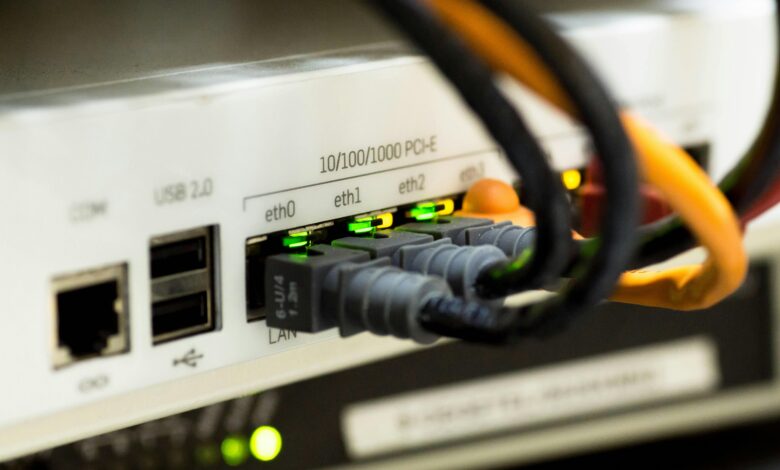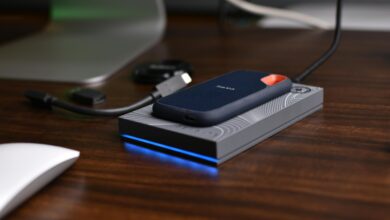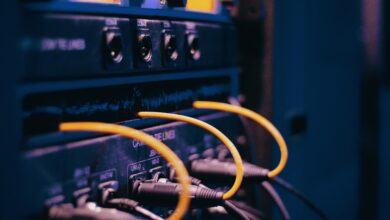The Latest Trends in Internet of Things (IoT): Shaping the Future of Connectivity

The Internet of Things (IoT) continues to revolutionize industries, homes, and cities by connecting devices, systems, and people through smart technologies. As IoT evolves, it is driving innovation across sectors such as healthcare, manufacturing, transportation, agriculture, and consumer electronics. In 2023, several key trends are shaping the future of IoT, from advancements in artificial intelligence (AI) integration to the rise of edge computing and sustainability-focused solutions.
In this article, we’ll explore the latest trends in IoT and how they are transforming the way we live, work, and interact with technology.
1. AI-Driven IoT: Smarter Devices and Predictive Analytics
Artificial Intelligence (AI) and Machine Learning (ML) are increasingly being integrated into IoT systems, enabling smarter decision-making and automation. AI-driven IoT devices can analyze vast amounts of data in real-time, providing actionable insights and predictive analytics.
Key Developments:
- Predictive Maintenance: In industries like manufacturing and logistics, AI-powered IoT sensors monitor equipment health and predict failures before they occur, reducing downtime and maintenance costs.
- Smart Homes: AI-enhanced IoT devices, such as voice assistants and smart thermostats, learn user preferences and adapt to optimize comfort and energy efficiency.
- Healthcare Innovations: Wearable IoT devices equipped with AI algorithms can monitor vital signs, detect anomalies, and alert users or healthcare providers to potential health risks.
Why It Matters:
AI-driven IoT enables more intelligent, responsive, and autonomous systems, improving efficiency, reducing human intervention, and enhancing user experiences.
2. Edge Computing: Processing Data Closer to the Source
As IoT networks expand, the volume of data generated by connected devices is growing exponentially. To address latency issues and reduce reliance on centralized cloud servers, edge computing has emerged as a critical trend.
Key Developments:
- Real-Time Processing: Edge devices process data locally, enabling faster decision-making without relying on distant cloud infrastructure.
- Bandwidth Optimization: By processing data at the edge, IoT systems reduce the amount of data transmitted to the cloud, saving bandwidth and lowering costs.
- Enhanced Security: Localized data processing minimizes the risk of sensitive information being intercepted during transmission.
Use Cases:
- Autonomous vehicles rely on edge computing to make split-second decisions based on sensor data.
- Smart factories use edge devices to monitor production lines and adjust operations in real-time.
Why It Matters:
Edge computing ensures faster, more reliable performance for IoT applications, especially in scenarios where low latency and high security are critical.
3. 5G Networks: Accelerating IoT Connectivity
The rollout of 5G networks is a game-changer for IoT, offering ultra-fast speeds, low latency, and the ability to connect millions of devices simultaneously. This advancement is unlocking new possibilities for IoT applications that require real-time communication and massive scalability.
Key Developments:
- Smart Cities: 5G enables the deployment of IoT solutions like smart traffic lights, connected public transportation, and environmental monitoring systems.
- Industrial IoT (IIoT): Factories and supply chains benefit from 5G’s ability to support large-scale IoT deployments with minimal delays.
- Augmented Reality (AR) and Virtual Reality (VR): IoT devices powered by 5G can deliver immersive AR/VR experiences for gaming, education, and remote collaboration.
Why It Matters:
5G enhances the capabilities of IoT systems, enabling more complex and interconnected ecosystems that were previously limited by slower network speeds.
4. Sustainability and Green IoT
As global awareness of climate change grows, there is increasing demand for sustainable IoT solutions that reduce energy consumption, minimize waste, and promote eco-friendly practices.
Key Developments:
- Energy-Efficient Devices: Manufacturers are designing IoT devices with lower power consumption and longer battery life.
- Smart Grids: IoT-enabled smart grids optimize electricity distribution, reduce energy waste, and integrate renewable energy sources like solar and wind.
- Agriculture Monitoring: IoT sensors help farmers monitor soil moisture, weather conditions, and crop health, enabling precision farming that conserves water and reduces chemical usage.
Why It Matters:
Green IoT aligns with global sustainability goals, helping businesses and consumers reduce their carbon footprint while improving operational efficiency.
5. IoT in Healthcare: Remote Monitoring and Telemedicine
The healthcare industry is leveraging IoT to improve patient care, streamline operations, and enable remote monitoring. This trend has gained momentum due to the increased adoption of telemedicine during the COVID-19 pandemic.
Key Developments:
- Wearable Health Devices: IoT wearables track metrics like heart rate, blood pressure, glucose levels, and sleep patterns, empowering individuals to manage their health proactively.
- Remote Patient Monitoring (RPM): IoT devices transmit real-time health data to doctors, allowing them to monitor patients outside traditional clinical settings.
- Smart Hospitals: IoT systems automate tasks like inventory management, patient tracking, and equipment maintenance, improving hospital efficiency.
Why It Matters:
IoT in healthcare enhances accessibility, reduces costs, and improves outcomes by enabling personalized, data-driven care.
6. IoT Security: Addressing Growing Threats
As IoT adoption expands, so do cybersecurity risks. Hackers target vulnerable IoT devices to steal data, disrupt services, or launch attacks on larger networks. Enhancing IoT security is a top priority for developers and organizations.
Key Developments:
- Device Authentication: Strong authentication protocols ensure only authorized devices can access IoT networks.
- Encryption: End-to-end encryption protects data transmitted between IoT devices and servers.
- Regulatory Compliance: Governments and industry bodies are introducing stricter regulations, such as the EU Cyber Resilience Act , to mandate IoT security standards.
Why It Matters:
Robust IoT security safeguards sensitive information, prevents cyberattacks, and builds trust among users and stakeholders.
7. Digital Twins: Virtual Replicas of Physical Systems
A digital twin is a virtual representation of a physical object, system, or process, created using real-time data from IoT sensors. This technology allows businesses to simulate, analyze, and optimize operations without affecting the actual environment.
Key Developments:
- Manufacturing: Digital twins help manufacturers test product designs, predict performance, and identify inefficiencies.
- Urban Planning: Cities use digital twins to model infrastructure projects, assess traffic patterns, and plan disaster responses.
- Healthcare: Digital twins of organs or body systems assist doctors in diagnosing diseases and planning treatments.
Why It Matters:
Digital twins enhance decision-making, reduce risks, and drive innovation by providing accurate, real-time insights into complex systems.
8. Consumer IoT: Smarter Homes and Personalized Experiences
Consumer IoT continues to grow, with smart home devices becoming more affordable and accessible. These devices offer convenience, energy savings, and enhanced entertainment options.
Key Developments:
- Voice-Controlled Assistants: Devices like Amazon Alexa and Google Assistant integrate with other IoT gadgets to create seamless smart home ecosystems.
- Smart Appliances: Refrigerators, washing machines, and ovens now come equipped with IoT capabilities for remote control and energy optimization.
- Personalized Recommendations: IoT devices analyze user behavior to provide tailored suggestions, such as fitness routines or shopping lists.
Why It Matters:
Consumer IoT enhances quality of life by automating daily tasks, improving comfort, and delivering personalized experiences.
9. Blockchain for IoT: Enhancing Transparency and Trust
Blockchain technology is being integrated with IoT to address challenges related to data integrity, transparency, and trust. Blockchain’s decentralized ledger ensures secure and tamper-proof record-keeping for IoT transactions.
Key Developments:
- Supply Chain Management: Blockchain tracks the movement of goods, verifying authenticity and preventing fraud.
- Smart Contracts: Automated agreements execute actions when predefined conditions are met, streamlining processes like payments and deliveries.
- Data Sharing: Blockchain enables secure sharing of IoT data between multiple parties without compromising privacy.
Why It Matters:
Blockchain enhances the reliability and accountability of IoT systems, fostering trust among users and stakeholders.



